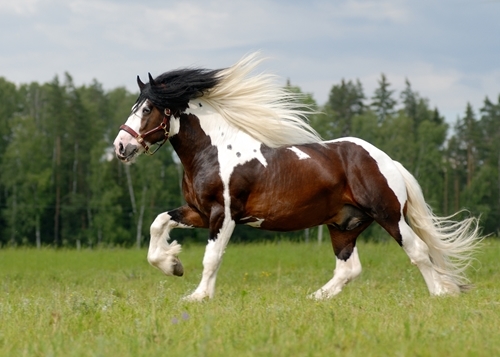Although horses have accompanied humans for more than 5,000 years, they never cease to fascinate owners and trainers. With as much brain as brawn, horses are enchanting animals. Even horse owners may be surprised to learn a few of these fascinating facts.
1. Flehmen response
When a horse makes that strange expression where it curls its upper lip and bares its teeth, the animal is actually activating its olfactory senses. It’s part of special nose-enhancing technique called a flehmen response. By doing this, horses are able to direct scents floating in the air toward special glands located at the end of the horse’s nasal passage. The bizarre-looking facial expression helps the animal waft these smells into the glands.
Interestingly, the flehmen response is more common in stallions than mares, most often when sniffing a female horse’s urine or when they are in the presence of a mare in estrus.
2. Spectacular memory
Horses understand words much better than scientists expected, according to a 2010 study published in the journal Animal Behavior. With such “excellent memories,” horses can not only recall their human friends after periods of separation, but also remember complex, problem-solving strategies for roughly 10 years. Thus, the study suggested that thanks to their fantastic recall ability, horses may be a loyal, long-term friend if you treat it right.
“Equid social relationships are long-lasting and, in some cases, lifelong,” Carol Sankey, who led the research, explained to Discovery Channel.
3. Bones
A horses has about 205 bones in its body. The number will vary depending on the breed and presence of the first carpal bone in each front knee. Generally, a horse’s bone structure can be categorized as such: 54 vertebral column, 36 ribs, 1 sternum, 34 skull, 40 front legs, 40 hindlegs. The number of tail coccygeal vertebrae is typically 18 but also varies. Even with this many bones, horse joint supplements may be helpful in proper horse care.
4. Eyes
At a diameter of roughly 2 inches, horses have bigger eyes than any other mammal that lives on land. When measured in volume, a horse’s eye is about nine times larger than that of a human.
What’s more, the shape of a horse’s eyeball is rather different from that of any other animal, as it is somewhat flattened from front to back. As a result, the distance from the cornea to the retina is not equal in all parts of the eye. Unlike the human eye that can focus on objects at varying distances through the action of the ciliary muscles, which change the shape of the lens, horses use the lower part of its retina to see objects at a distance and the upper part to view objects nearby.
The horse-eye has three eyelids, consisting of two ordinary ones and third called the nictitating membrane, which is located in the inner corner of the eye and occasionally sweeps the eye, lubricating and cleaning it as necessary.
5. Police horses
Horses’ role in law enforcement began in the 17th century during King Charles’ reign. The first official mounted police unit was established in 1805 as London’s Horse Patrol, and by the 1820s both Texas and Australia had implemented horse-mounted police units. The majority of these units rely on geldings though some have used mares and stallions.
Fluid Action® HA provides the same great benefits as original Fluid Action® except with added Sodium Hyaluronate (HA) for extra support in promoting healthy joints.








